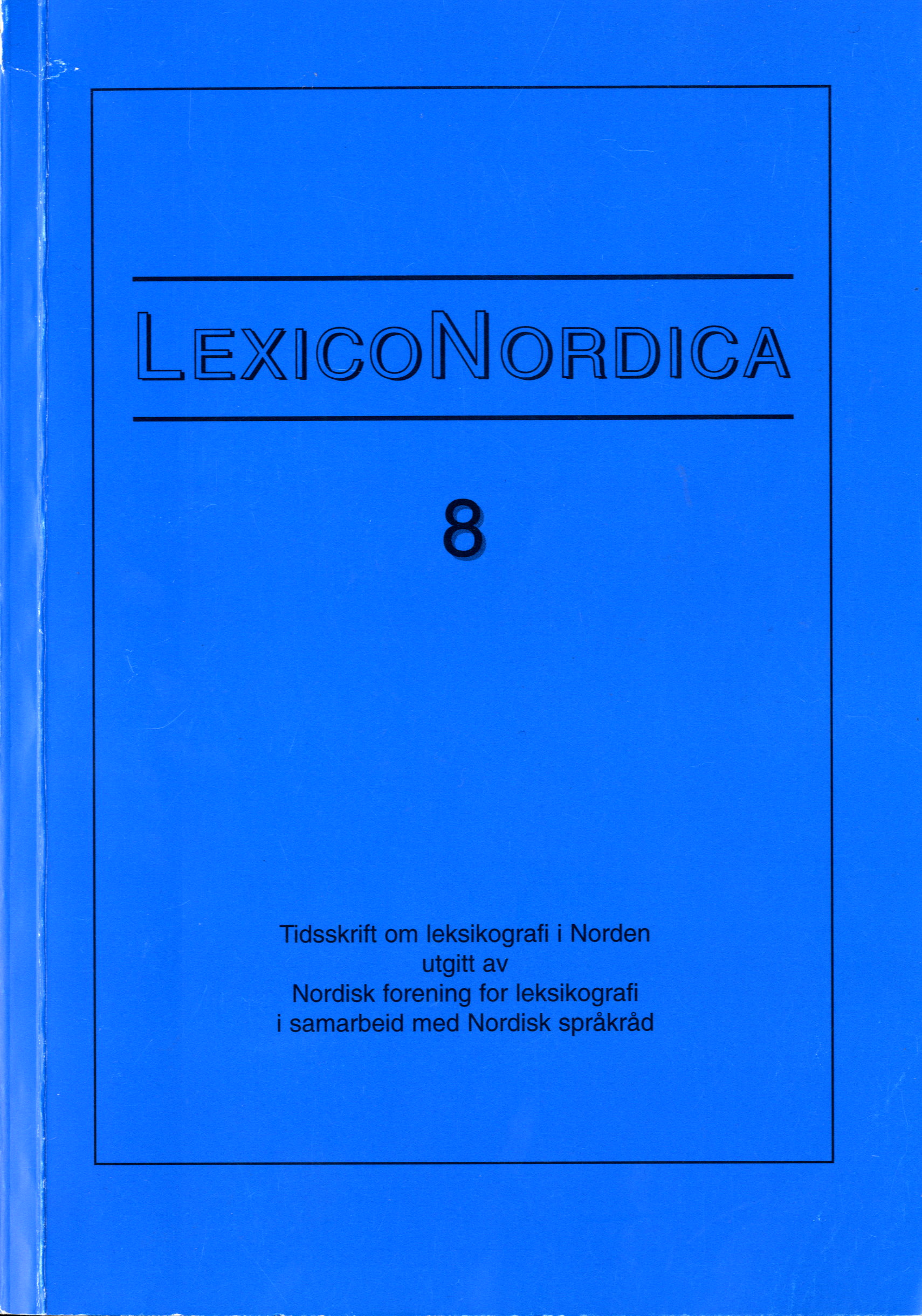Að hafa í sig og á. Isländsk fraseologi i ett isländskt-svenskt perspektiv
DOI:
https://doi.org/10.7146/ln.v0i8.18746Resumé
In this paper we discuss a new approach to Icelandic phraseology in an Icelandic-
Swedish dictionary. A finite set of semantic fields forms the structure on which the
lexical description is based, and each field is further structured into subsets
according to the diverse meanings of the phrases involved. A key feature of a
dictionary of this kind is its multiple access structure, allowing access to the
concepts, the key words of the phrases, and the phrases themselves. Each phrase is
attached to one or more semantic field(s). Here we illustrate the method by the field
FJÁRHAGUR, i.e. economy. The structure of the field is illustrated, the core
vocabulary within the field is presented and defined, followed by phrases belonging
to the field. Through the multiple access structure it is possible to register and
describe lexical entities and concepts that have not been lexicalized as single words.
Such entities are poorly treated in traditional, word-based dictionaries. The bilingual
perspective on the parallel monolingual description of each of the languages is
meant to add a genuine contrastive dimension to the lexical analysis.
At a more principal level, this paper also deals with the advantages of this access
structure compared to those of ordinary bilingual dictionaries. Some of the shortcomings
of traditional bilingual lexicography in general are discussed, as well as
some weaknesses characteristic of such lexicography as where two closely related
languages are involved.
Downloads
Publiceret
Citation/Eksport
Nummer
Sektion
Licens
LexicoNordica og forfatterne





